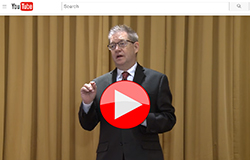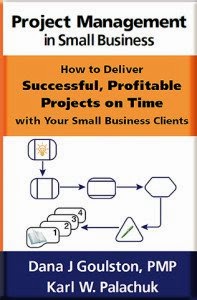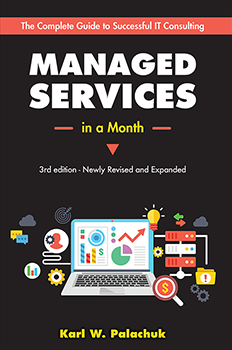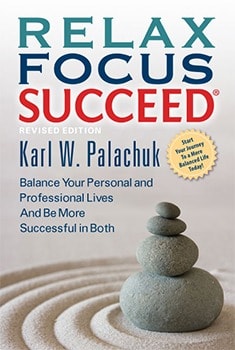Many people (mostly end-users) hold some old and long-established beliefs about emerging technologies that simply are not true. The most surprising thing about this is that evidence is everywhere, throughout history. Here's a little perspective that might help at the next cocktail party or BBQ (Check with your local groundhog before planning any BBQs).
Here are three common myths and one enduring truth about emerging technology.
Myth: New Technology Will Eliminate Jobs
Current Example: AI
This is, by far, the most enduring myth. Musket-makers were replaced by rifle-makers. Hand-made rifles were replaced by mass-produced rifles.
It's the same story with every "new" technology replacing an older technology. Candle-makers opposed the adoption of gas lighting. Gas workers opposed the introduction of electrical lighting.
The origin of the word Luddite (n. A person opposed to technical improvements) goes back to English textile workers opposed to the introduction of mechanized looms - because they feared losing their jobs.
In reality, new technology tends to take the following path:
First, it requires new training. People need to learn to install, use, and maintain the new technology. This stage creates new kinds of jobs that need to be populated. The kind of work diversifies.
Second, some of the jobs being done by the new technology do disappear. As a rule, those old workers are most likely to be the ones trained on the new technology because they understand the bigger picture, the industry, and where the technology fits.
Third, if the new technology is good and stays around, the entire operation is either faster, cleaner, safe, or more efficient. As a result, every piece of the business that's not directly connected to the new technology is now under stress as every piece of the business has to work faster in order to keep up with the new efficiency, or the the problems caused by the new efficiency.
You've seen hundreds (or thousands) of examples of this in movies, plays, and TV shows. The production line speeds up. Comedy ensues. Things fall off the line. In the real world, a faster process generally results in more errors in the short term, followed by more fixes and more updates to other technologies.
The bottom line is: Some of the original jobs are eliminated. But a variety of other jobs are created. And, as the updates to related technologies echo through the system, more and more different kinds of jobs are created.
Imagine all the jobs that are related to modern car manufacturing. Not just mechanics, but engineers, inspectors, equipment maintenance techs, painters, inspectors, the entire tire industry, repair people, rental outfits, electricians, drivers, and hundreds of other categories. All of which make possible the entire highway system and related hotels, motels, and all those jobs.
But, yes, people who make hand-hewn horse-drawn carriages have few jobs. But the total number of jobs lost is microscopic compared to the number created.
Myth: In the Future, We Will All Lead Lives of Leisure (because of technology)
The funny thing about this myth is that no one believes it! But it persists as the "great someday" kind of myth.
Towards the end of the 19th Century Industrial Revolution, "innovative" businesses put some limits on how many hours people were expected to work. Eventually, so did the government.
The norm went from "unlimited" to forty or fifty hours. But even today, there are lots of jobs with ten- and twelve-hour shifts. As a rule, most people are happy to work somewhere around thirty, forty, or fifty hours per week. In fact, we know that self-employed people generally work 40-50 hours per week, although they often brag about working more. (That's another blog.)
What we do with new technology is to get more done within a reasonable amount of time. The truth is, technology should make us better, faster, and more efficient. But very few of us cut back the amount we work; we just brag about how much more we got done!
For example, consider the automations in delivering managed IT services. Way back at the beginning, I based my price on the value of what I delivered. Then I added tools like RMM and various monitoring tools to accomplish the same thing (only better) in a lot less time.
I did not then retire to my farm, smoke a pipe on the porch, and commit my life to writing poetry. I didn't even consider it. Instead, I realized that I could serve move clients in the same amount of time. But that gave me some extra income, which I used to invest in better tools . . . until I couldn't manage it all. So I hired employees.
In other words, my use of emerging technology allowed me to get more done, serve more clients, and grow my business. It did not lead me down the road to working two hours a day and a life of leisure.
Myth: New Technology Always Drives Down the Price
I call this a myth because, while it is
sometimes true, it is most often not true. There are advancements that reduce prices, and there are industries in which specific technology drives down the price. But the overall tendency of technology is to get smaller, better, and faster . . . and to then get combined with other technologies.
Best example here is cell phones. Before they were popular, cell phones were crazy expensive. Then, in order to build a large audience, cell phone providers subsidized the cell phones into their plans. More technology shrank, and that got added to the cell phone. Rinse, repeat.
Once the market was saturated (85% of the eight billion people on earth have cell phones!!!), the price started going up. As a rule, new features are added to Android phones first because it's more of the wild west, with each company doing whatever they want. After a few years, the most popular features are added to Apple phones.
Apple introduces a new cell phone about once per year. And does the price go down? No. Today, there are a few free phones, but the price for most of us just keeps going up, up, up. Phones have not settled into the "home electronics" model quite yet, but I suspect we are close.
In the home electronics model, there are roughly four price points. We'll use home audio as an example. The price points are Super Cheap, Mid-Range, High-End, and Crazy Expensive (These are my categories. You might as a home electronics specialist what they call them.).
In this four-tiered structure, many people start out with the cheapest. If they like the tech but not the sound, they move to mid- or high-end. Audiophiles always try to buy at the high end if they can. When the have the means, they even try to buy at the crazy expensive price point.
Here's the pattern: The price range stays about the same for the three primary tiers. But what you get for that price gets better over time.
We pay attention to the fact that a basic [ whatever ] keeps getting cheaper. But the reality is, we buy at our price point. So, for example, you might be willing to pay $400-$500 for a television. Within that price range, the televisions just keep getting bigger and better.
It's true that new technology is much more expensive, and that each distinct technology goes down once it achieves widespread adoption. But over time, we settle into known, well-trod paths for price ranges. And we just keep adding newer technologies to the bundle to maintain the price range. How do you keep people buying $1,000-$1,500 laptops? Give them more features!
This is a primary driver of bundle pricing. Has technology dropped your cable TV (and cable Internet) bill to one dollar per month? No. Not even close. The average cable bill is well over $200 per month. Why? Because you want that Super Bowl game, and the extra fancy channel, and the Internet. People have access to an average for 190 channels and watch an average of 15. All of this is by choice.
Could technology drive all these prices to zero? Yes. But why would a company provide that? Technology exists within a social and economic context. We choose to keep prices up because we choose the bundle. You could choose to get a super-cheap cell phone and only watch free TV. But you'd whine about it a lot.
Truth: Old Technology Does Not Disappear Finally, there's a long-established truth that gets ignored a lot. Old tech is almost never replaced quickly. You've all read about adoption curves. New technology get adopted slowly over time. Then there's a sudden bump, and eventual mass-acceptance.
But old tech stays around forever.
The last telegram was sent in 2013. That's probably 50-75 years after you might have assumed. Cobol (introduced in 1959) is so widely used today that Cobol programmers are highly sought after and very highly paid. Dot matrix printers are still widely used. Twenty-seven percent of US homes still have a wired landline phone.
Your car probably has an old-school power supply that used to be the place where the lighter plugged in. That form-factor may never die. Faxes are still widely used.
In fact, one of the biggest problems software developers have is that people refuse to give up their old operating systems. Microsoft kowtowed to these people forever, until Windows 10. And even now, they force compatibility with older versions of hardware and software.
To maximize compatibility, my brand new HP desktop computer with a Xeon processor has interfaces for PS2 keyboard and mouse. One one hand, it will connect to four different gigabit networks and four HDMI monitors, but it will work perfectly with a serial devices, parallel ports, and PS2. That's only built into this brand new machine because all of those devices are still in use by someone.
My point is, people fear that emerging technology will suddenly make them and their technology obsolete. But the reality is, it will slowly make the technology obsolete. As for the humans, training solves all problems.
Almost everyone has time to get used to the new stuff coming down the road. So, the next time someone starts to panic about AI or any other emerging technology, encourage them to relax and go get some training!
:-)


































